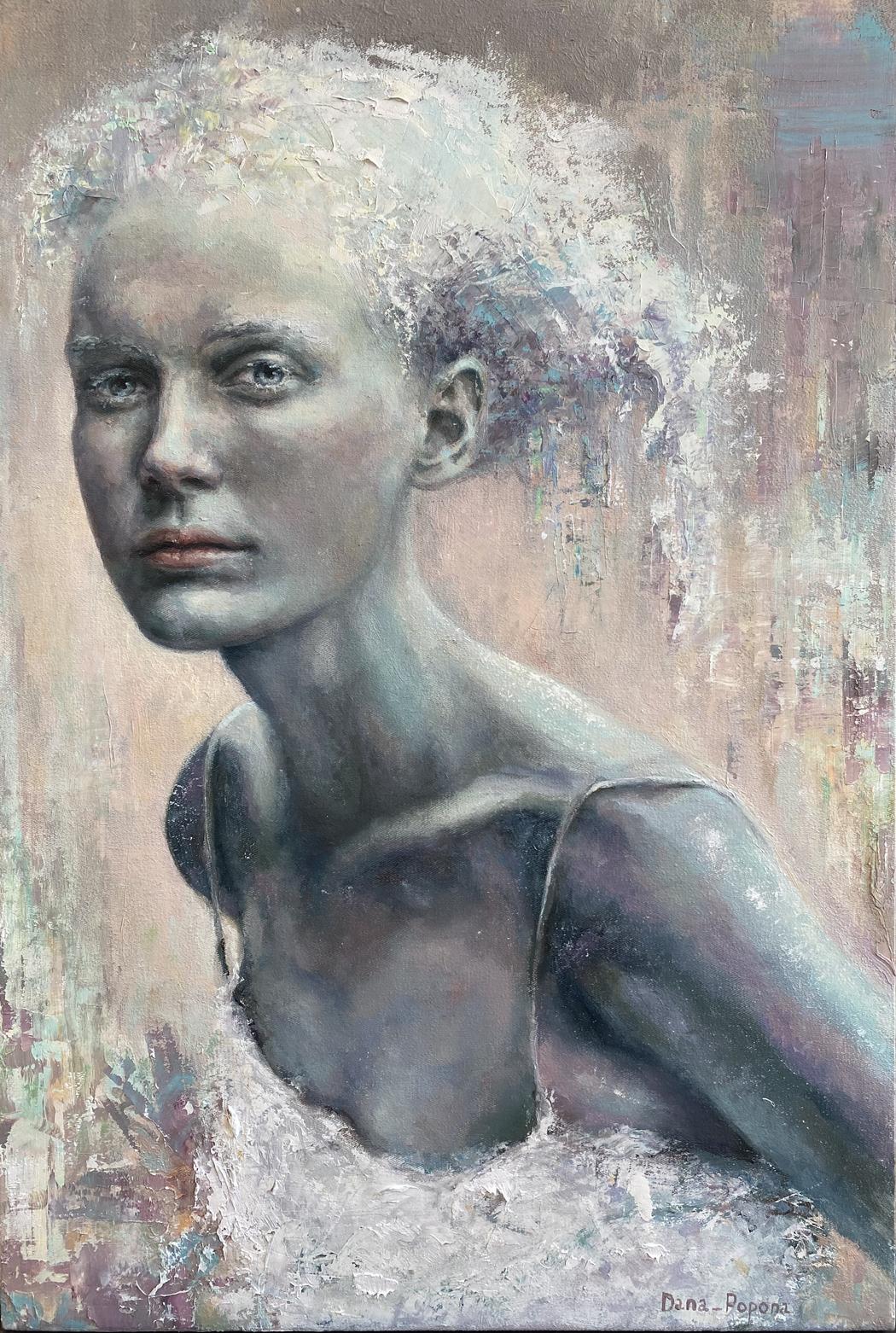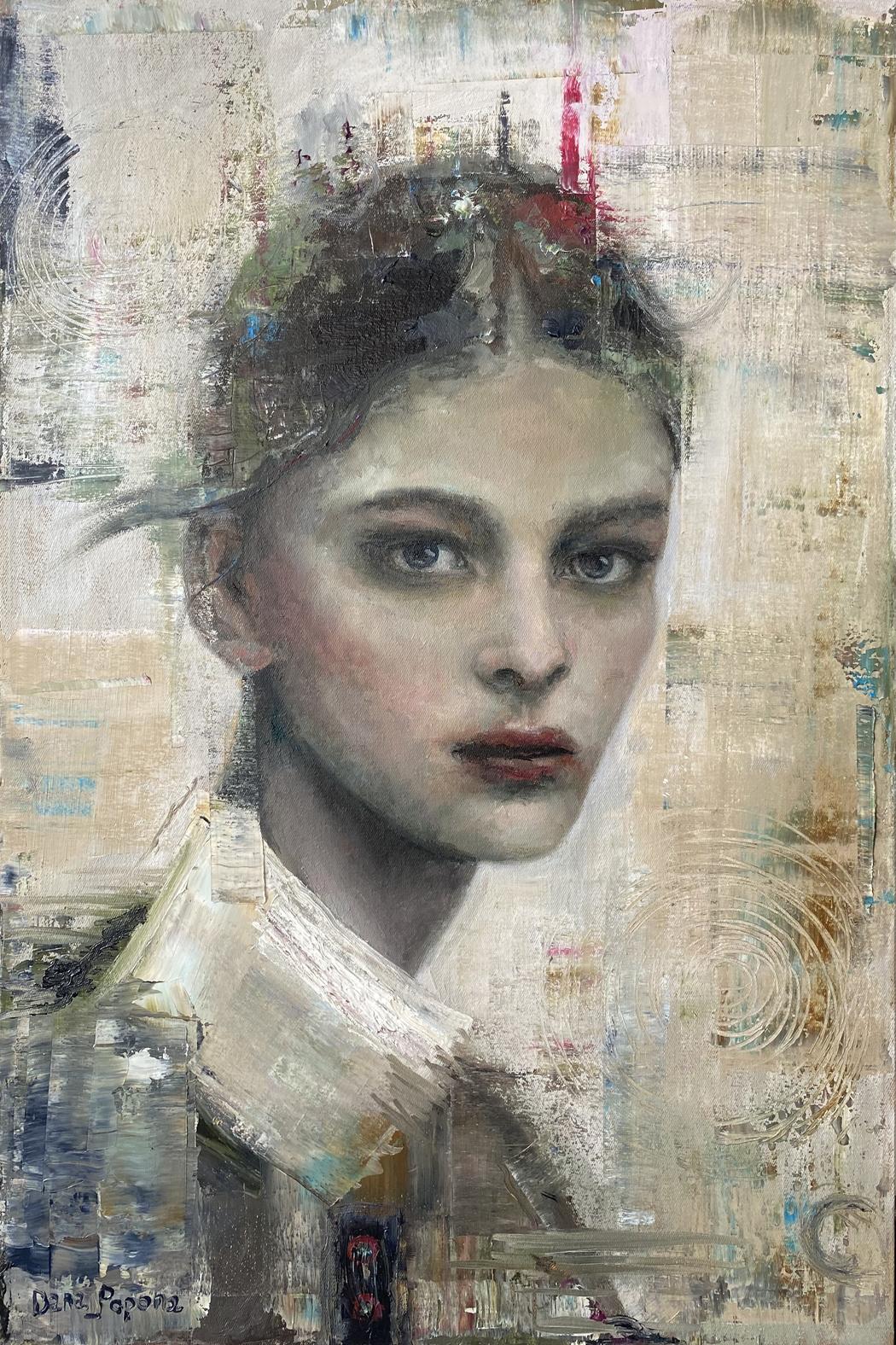Diana Chechushkova
Education: 2002–2006 Chelyabinsk Humanitarian Institute; 2021–2022 International network of drawing schools “Grafika”, Chelyabinsk; 2022–2024 School of icon painting at the Church of the Holy Martyr John the Warrior, Chelyabinsk; 2022–2024 Workshop of Alexander Ivanov, Chelyabinsk; 2023–2024 Individual lessons with artist Nikolai Bulychev (drawing & composition)
Describe your art in three words: Realism with elements of impressionism
Your discipline: Portraitist
Website
 Diana Chechushkova | Touch Of An Angel | 2025
Diana Chechushkova | Touch Of An Angel | 2025
Could you describe how your background in icon painting has influenced the way you approach portraiture today?
My icon painting experience has certainly influenced my approach to portraiture today. Mastering multi-layered painting techniques has proven particularly valuable. It allows me to create threedimensional and expressive images and conveying the character and emotions of my subjects on a deeper level. Icon painting also utilizes a muted color palette, which is reflected in my works. These techniques help me mix traditional craftsmanship with contemporary approaches in painting.
What inspired you to shift from iconography to impressionistic portraits?
For me the transition from iconography to impressionism was a natural step. Icon painting leaves a deep impression, but the process of creating it is very strict (subjected to clear rules) and slow. In impressionism, I found freedom of expression and the opportunity to convey emotion and light more directly. This allowed me to combine the depth and feeling I absorbed from iconography with the dynamism and color of painting.
Working with iconography, I realized that I wanted to paint living, real people. Just like all of us: imperfect, doubting, searching, dreaming, rebellious, desperate and hopeful. I want my portraits to reflect God’s highest creation — humans, the beauty of their faces and the mystery of their souls.
 Diana Chechushkova | Self Deception | 2023
Diana Chechushkova | Self Deception | 2023
How do you select the models or faces for your paintings?
Initially, when I started the “Immersed” series, I painted composite images of fictional characters. The images came from my head, the emotions were drawn intuitively, from the subconscious. These images contain my stories and emotions, essentially my self-portraits, because every artist brings a piece of him- or herself, a piece of soul, and his or her worldview to the painting. Today, my models are real people, and I work with their emotions. Choosing models, I have several important aspects: appearance, from which the idea is born and a suitable image.
Internal compatibility with me is important too. When we are on the same wavelength, when we share similar vibrations. And the last one is model’s ability to work with the body and express emotions.
The series Immersed explores deep inner feelings and solitude. How do you personally connect to this theme?
The heroes of the “Immersed” series are united by something with which a person is born into this world, goes through life, and dies — loneliness. It’s natural for a mature soul, and terrifying for an immature one. Even surrounded by loved ones, we remain lonely inside, trapped by inhibitions and doubts, tormented by guilt and unable to come to terms with ourselves, keeping secrets we do not trust anyone. This state is inherent to all people on the earth, and it certainly applies to me.
 Diana Chechushkova | Odetta | 2024
Diana Chechushkova | Odetta | 2024
Your textures and color layers create a dreamlike atmosphere. Which materials and techniques help you achieve this effect?
I use oil paints as the main material for creating a dreamlike atmosphere. I often mix paints directly on the canvas, achieving the desired color rendition and effects. That is how my technique, which I call “sculptural surgery of painting,” was born. Using the blade of a stationery knife, I apply brushstrokes to the canvas, making them thick and heavy or light and thin, softening or intensifying transitions. Using this technique, I paint the hair of my characters, their clothing, and the overall background of the painting.
Using the technique of scumble, which involves applying transparent layers of colored glazes, I achieve a deep and multifaceted color palette, creating the illusion of volume and light. Each layer adds a new nuance that interacts with the previous ones, which allows to convey an atmosphere of mystery and dreaminess. I use a wide range of colors, which helps to achieve more complex and deeper mixes.
Another important technique is sfumato, which permits me to soften the contours and delicately transition from one color to another. I suppose that the dreamy effect in my works is achieved by the fact that even when I work with large formats, I use thin artistic brushes.
 Diana Chechushkova | I See | 2023
Diana Chechushkova | I See | 2023
How do you decide when a portrait is finished, given that emotions can feel endless?
There is a subconscious limiter in me. I will work on the painting until the “stop” comes. I do not go back to work after that. Looking at the early works, I like to observe my own growth, the discovery of new approaches.
If we talk about emotions, as soon as an emotion appears in the portrait, it becomes clear. I fix it, focus on it and make sure that it does not change. In work sometimes my mood changes and the emotion of the character. It is not always good. This can lead to a change in the whole idea.
 Diana Chechushkova | Diptych “Turn Around” | 2025
Diana Chechushkova | Diptych “Turn Around” | 2025
What message would you like viewers to take away after seeing your series Immersed?
I want the viewer to immerse in himself. With the interacting with my paintings, he finds his response in his heart, sees his own, reflects on what he does not dare to admit to himself. I want the viewer to be as honest with himself as I trust him, exposing his soul in my works. I want to have a dialogue with the viewer, because what distinguishes me from him is that we are on different sides of the portraits: I create them, and he looks, but otherwise I am the same person, with the same feelings, doubts, joys, fears and excitement.

Leave a Reply